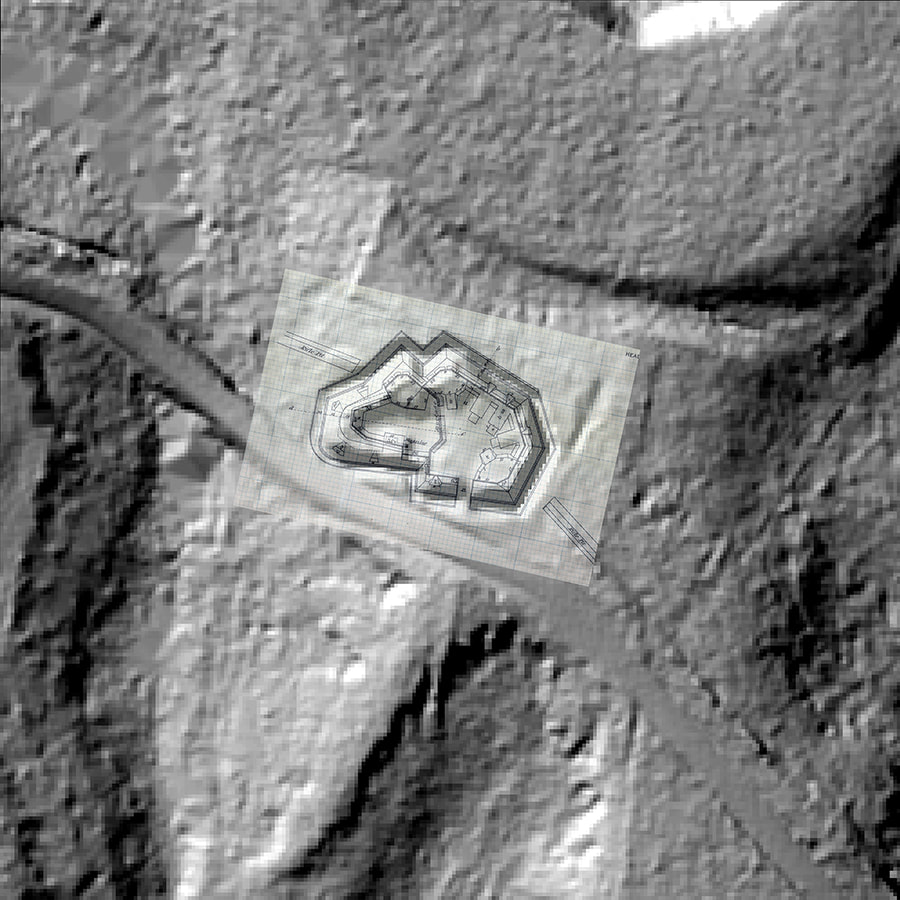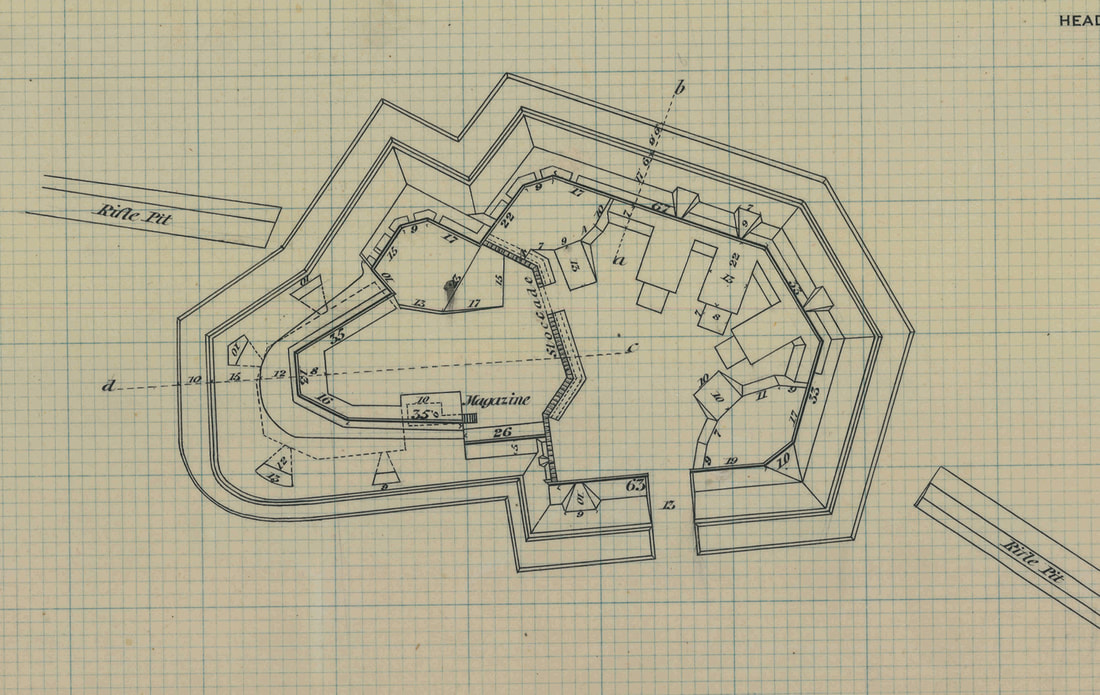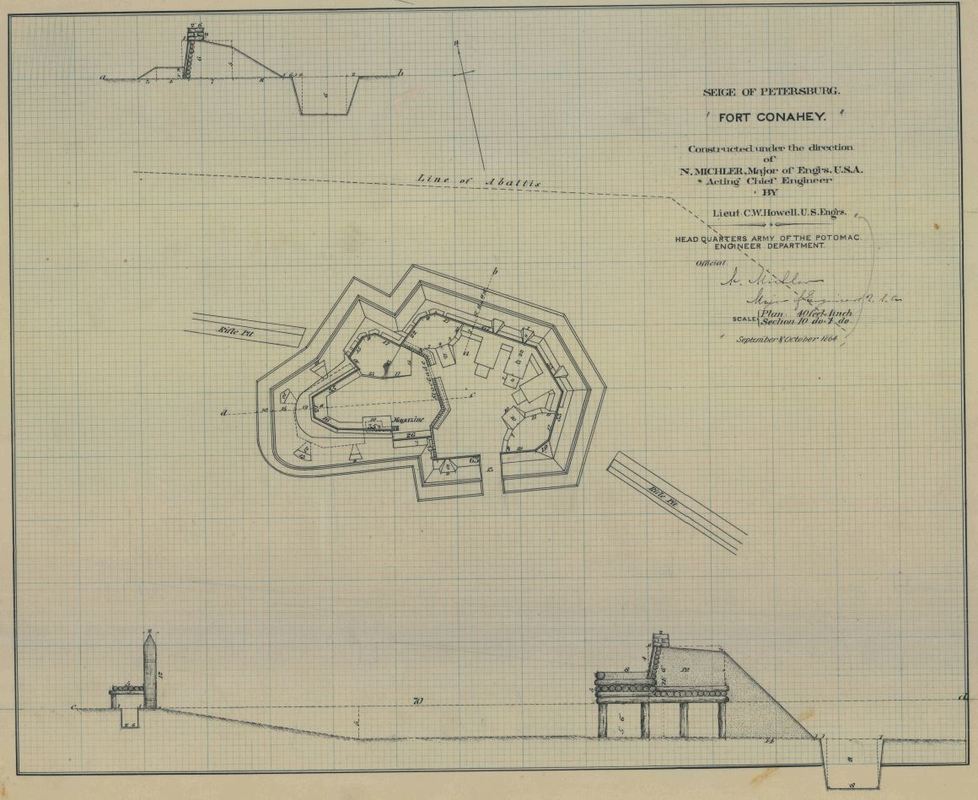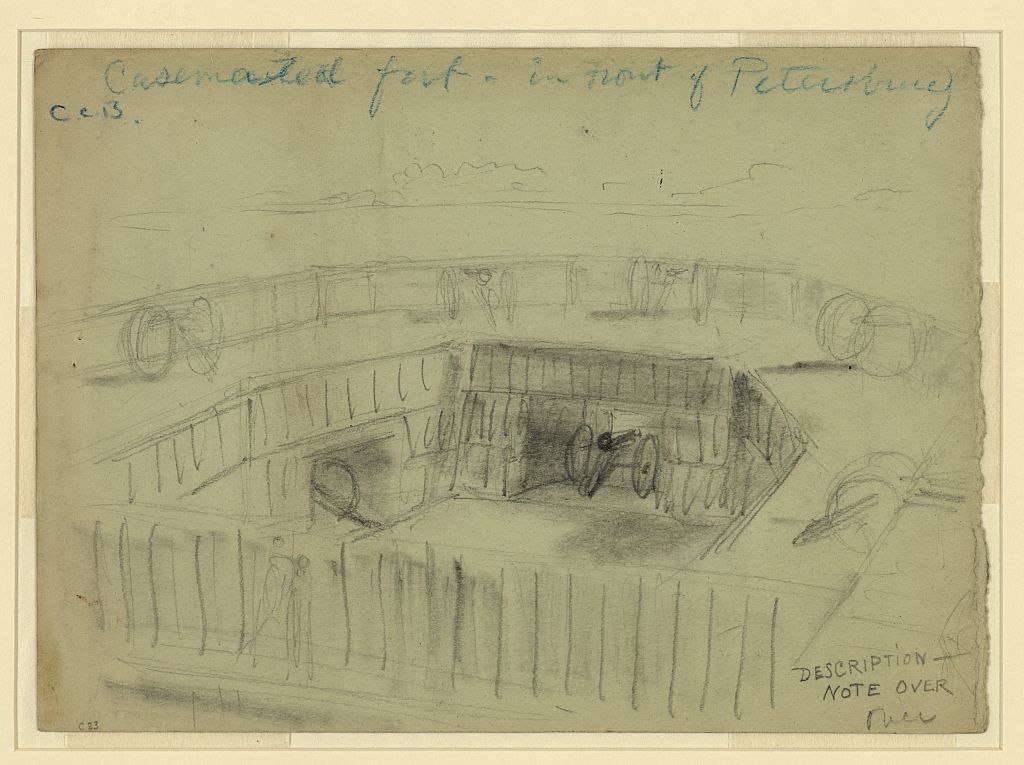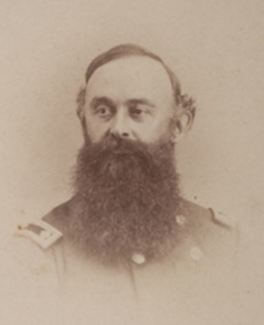LIDAR, which stands for Light Detection and Ranging, is a remote sensing method that uses light in the form of a pulsed laser to measure ranges (variable distances) to the Earth. These light pulses—combined with other data recorded by the airborne system— generate precise, three-dimensional information about the shape of the Earth and its surface characteristics.
Fort Conahey
Headquarters Fifth Army Corps,
October 13, 1864.
Brig. Gen. S. Williams, Assistant Adjutant- General :
In compliance with your order, I have the honor to report the names of officers who were killed in the late battle at Peebles’ farm: Col. Norval E. Welch, Sixteenth Michigan Veteran Volunteers; Capt. J. H. Wheaton, First Michigan Veteran Volunteers; Capt. W. H. Keene, Twentieth Maine Volunteers; First Lieut. Thomas D. Urmston, Twelfth U. S. Infantry; Second Lieut. J. Conahey, One hundred and eighteenth Pennsylvania Volunteers.
Respectfully, S. W. CRAWFORD, Brigadier- General, Commanding.
October 13, 1864.
Brig. Gen. S. Williams, Assistant Adjutant- General :
In compliance with your order, I have the honor to report the names of officers who were killed in the late battle at Peebles’ farm: Col. Norval E. Welch, Sixteenth Michigan Veteran Volunteers; Capt. J. H. Wheaton, First Michigan Veteran Volunteers; Capt. W. H. Keene, Twentieth Maine Volunteers; First Lieut. Thomas D. Urmston, Twelfth U. S. Infantry; Second Lieut. J. Conahey, One hundred and eighteenth Pennsylvania Volunteers.
Respectfully, S. W. CRAWFORD, Brigadier- General, Commanding.
"This is the only casemented fort on the line. I was not allowed to make a sketch of it, so this is a stolen one. Across the nigh part of the work is a pallisade with platform for one line of musketeers above the other to defend the work in case it should be entered/ 1864."
"This fine specimen of field fortification, was constructed at an exposed angle of the line of siege works. and with cannon mounted on the parapet and in the casemates. it could concentrate a hot fire upon an advancing enemy, and in the possible event of its being captured a line of loop holed palisades across the body of the work; gave cover to two lines of infantry one over the other whose deadly fire would soon clear it of an invading force." --- A.R. Waud.
|
|
Hdqrs. Army of the Potomac, Engineer Dept.,
October 22, 1864. Colonel : The following report of the engineering operations of this army during the week ending to-*day is respectfully submitted for the information of Lieutenant-General Grant: The officers attached to the Engineer Battalion, in addition to their company duties, have continued their labors of last week. Lieutenant Howell has had charge of Forts Cummings, Sampson, Gregg, and Conahey, all of which are occupied by the required garrisons with the necessary armament, except the last; this, too, is now very nearly completed. I am, colonel, very respectfully, your obedient servant, N. MICHLER, Major of Engineers, U. S. Army, Acting Chief Engineer. |
October 26, 1864.
Lieut. Col. Fred. T. Locke,
Assistant Adjutant-General, Fifth Army Corps:
Colonel: I have the honor to report the following batteries which are to be left in garrison: Battery 24, two 3-inch rifles, LieutenantMiller; Battery 25, two light 12-pounders, Lieutenant Sheehy; Fort Howard, two light 12-pounders, two 3-inch rifles, Lieutenant McMahon; Battery 26, two 3-inch rifles, two light 12-pounders, Lieutenant Clark; Fort Wadsworth, four light 12-pounders, four 3-inch rifles, Captain Matthewson; Fort Keene, two 3-inch rifles, two light 12-pounders, Captain Ritchie; Fort Urmston, four light 12-pounders, two 3-inch rifles, Lieutenant Hazelton; Fort Conahey, two 3-inch rifles, two light 12-pounders, Captain Breck.
C. S. WAINWRIGHT,Colonel, Commanding Brigade.
Lieut. Col. Fred. T. Locke,
Assistant Adjutant-General, Fifth Army Corps:
Colonel: I have the honor to report the following batteries which are to be left in garrison: Battery 24, two 3-inch rifles, LieutenantMiller; Battery 25, two light 12-pounders, Lieutenant Sheehy; Fort Howard, two light 12-pounders, two 3-inch rifles, Lieutenant McMahon; Battery 26, two 3-inch rifles, two light 12-pounders, Lieutenant Clark; Fort Wadsworth, four light 12-pounders, four 3-inch rifles, Captain Matthewson; Fort Keene, two 3-inch rifles, two light 12-pounders, Captain Ritchie; Fort Urmston, four light 12-pounders, two 3-inch rifles, Lieutenant Hazelton; Fort Conahey, two 3-inch rifles, two light 12-pounders, Captain Breck.
C. S. WAINWRIGHT,Colonel, Commanding Brigade.
Hdqrs. Army of the Potomac, Engineer Dept.,
October 29, 1864.
Colonel: The following report is respectfully submitted for the information of the lieutenant-general commanding the Armies of the United States. Fort Conahey was not completed prior to the movement, but Lieutenant [Charles Wagoner] Howell has since resumed work upon it.
I am, colonel, verv respectfully, vour obedient servant, MICHLER, Major Engineers, Acting Chief Engineer.
October 29, 1864.
Colonel: The following report is respectfully submitted for the information of the lieutenant-general commanding the Armies of the United States. Fort Conahey was not completed prior to the movement, but Lieutenant [Charles Wagoner] Howell has since resumed work upon it.
I am, colonel, verv respectfully, vour obedient servant, MICHLER, Major Engineers, Acting Chief Engineer.
Hdqrs. Army of the Potomac, Engineer Dept.,
November 7, 1864.
Colonel: The following report for the week ending on the 5th instant, exhibiting the engineering operations of the Army of the Potomac during that period, is respectfully submitted for the information of the lieutenant-general commanding the Armies of the United States: Lieutenant Howell has had charge of the construction of Fort Conahey. The parapet and stockade are finished and the interior works are being pushed rapidly forward. Lieutenants Phillips and Heap have been engaged upon the construction of new magazines in Fort Howard and Battery 26.
I am, colonel, very respectfully, your obedient servant, N. MICHLER, Major of Engineers, U. S. Army.
November 7, 1864.
Colonel: The following report for the week ending on the 5th instant, exhibiting the engineering operations of the Army of the Potomac during that period, is respectfully submitted for the information of the lieutenant-general commanding the Armies of the United States: Lieutenant Howell has had charge of the construction of Fort Conahey. The parapet and stockade are finished and the interior works are being pushed rapidly forward. Lieutenants Phillips and Heap have been engaged upon the construction of new magazines in Fort Howard and Battery 26.
I am, colonel, very respectfully, your obedient servant, N. MICHLER, Major of Engineers, U. S. Army.
November 8, 1864.
Brig. Gen. S. Williams, Assistant Adjutant- General:
General: I have the honor to report everything quiet in my front during the last twenty-four hours. No deserters received. A detail of 100 men is at work on Fort Conahey.
Respectfully, G. K. WARREN, Major-General, Commanding.
Brig. Gen. S. Williams, Assistant Adjutant- General:
General: I have the honor to report everything quiet in my front during the last twenty-four hours. No deserters received. A detail of 100 men is at work on Fort Conahey.
Respectfully, G. K. WARREN, Major-General, Commanding.
Hdqrs. Army of the Potomac, Engineer Dept.,
November 20, 1864
General : I have the honor to submit the following report of the engineering operations in this army for the week ending November 19, 1864: The construction of Fort Conahey has been completed under the immediate direction of Lieutenant Howell and Lieutenant Phillips, assisted by Lieutenant Benyaurd, made a thorough inspection of the line from Battery No. 13 to Fort Stedman.
I am, general, very respectfully, your obedient servant, J. C. DUANE, Major of Engineers, U. S. Army.
November 20, 1864
General : I have the honor to submit the following report of the engineering operations in this army for the week ending November 19, 1864: The construction of Fort Conahey has been completed under the immediate direction of Lieutenant Howell and Lieutenant Phillips, assisted by Lieutenant Benyaurd, made a thorough inspection of the line from Battery No. 13 to Fort Stedman.
I am, general, very respectfully, your obedient servant, J. C. DUANE, Major of Engineers, U. S. Army.
Hdqrs. Army of the Potomac, Engineer Dept.,
November 14, 1864.
General: In compliance with article II, Special Orders, No. 119, headquarters Armies of the United States, dated November 4, 1864, superseding paragraph I, of Special Orders, No. 91, of date September 12, from the same headquarters, and this day received; I have the honor to report the engineering operations in this army during the week ending on the 12th instant: The construction of Fort Conahey has been advanced under the immediate direction of Lieutenant Howell, U. S. Engineers, and is now very nearly completed, four feet of earth already covering the magazine.
I am, general, very respectfully, your obedient servant, N. MICHLER, Major of Engineers, U. S, Army.
November 14, 1864.
General: In compliance with article II, Special Orders, No. 119, headquarters Armies of the United States, dated November 4, 1864, superseding paragraph I, of Special Orders, No. 91, of date September 12, from the same headquarters, and this day received; I have the honor to report the engineering operations in this army during the week ending on the 12th instant: The construction of Fort Conahey has been advanced under the immediate direction of Lieutenant Howell, U. S. Engineers, and is now very nearly completed, four feet of earth already covering the magazine.
I am, general, very respectfully, your obedient servant, N. MICHLER, Major of Engineers, U. S, Army.
Special Orders No. 309, Headquarters Second Army Corps,
Peebles’ House, Before Petersburg, Va.,
December 5, 1864.
9. The Second Division of this corps will relieve General Griffin’s division, of the Fifth Corps, in holding the intrenehments as soon after daylight on the morning of the 6th instant as practicable. The right of General Griffin’s command is between Fort Urmston and Fort Keene, and his left at Fort Fisher. General Gibbon will assign garrisons to Fort Urmston and Fort Conahey, 250 men to the former and 75 men to the latter. The pickets of the Second Division in the rear will be relieved by 300 men of the Third Division at daylight in the morning.
By order of Major-General Humphreys: SEPT. CARNCROSS, Assistant Adjutant-General
Peebles’ House, Before Petersburg, Va.,
December 5, 1864.
9. The Second Division of this corps will relieve General Griffin’s division, of the Fifth Corps, in holding the intrenehments as soon after daylight on the morning of the 6th instant as practicable. The right of General Griffin’s command is between Fort Urmston and Fort Keene, and his left at Fort Fisher. General Gibbon will assign garrisons to Fort Urmston and Fort Conahey, 250 men to the former and 75 men to the latter. The pickets of the Second Division in the rear will be relieved by 300 men of the Third Division at daylight in the morning.
By order of Major-General Humphreys: SEPT. CARNCROSS, Assistant Adjutant-General
Batln. U. S. Engineers, Hdqrs. Army of the Potomac,
December 5, 1864.
Maj. J. C. Duane, Chief Engineer : I would respectfully call attention to the building of log huts near the fortifications, particularly along the front line at Forts Wadsworth, Keene, Urmston, Conahey, and Fisher, and recommend that orders be given to burn them as soon as an attack is apprehended, or in case it should become necessary to hold the line by the forts alone.
Very respectfully, your obedient servant, C. W. HOWELL, Corps of Engineers.
December 5, 1864.
Maj. J. C. Duane, Chief Engineer : I would respectfully call attention to the building of log huts near the fortifications, particularly along the front line at Forts Wadsworth, Keene, Urmston, Conahey, and Fisher, and recommend that orders be given to burn them as soon as an attack is apprehended, or in case it should become necessary to hold the line by the forts alone.
Very respectfully, your obedient servant, C. W. HOWELL, Corps of Engineers.
Headquarters First Brigade, Second Army Corps
December 6,1864:
Maj. John M. Norvell, Assistant Adjutant-General, Second Division:
Major: I have the honor to report the following changes in the position of this brigade: Incompliance with instructions from division headquarters, received at midnight on the 5th instant, this command moved from its encampment in front of Fort Siebert at 6 o’clock this morning and relieved a portion of the First Division, Fifth Corps. The brigade now occupies a portion of the line of works between Fort Fisher on the left and Fort Urmston on the right, garrisoning Fort Conahey with seventy-five men of the One hundred and eighty-fourth Pennsylvania Volunteers, Lieut. Col. C. Kleckner.
I have the honor to be, very respectfully, your obedient servant,
JAS. M. WILLETT, Colonel, Commanding Brigade.
December 6,1864:
Maj. John M. Norvell, Assistant Adjutant-General, Second Division:
Major: I have the honor to report the following changes in the position of this brigade: Incompliance with instructions from division headquarters, received at midnight on the 5th instant, this command moved from its encampment in front of Fort Siebert at 6 o’clock this morning and relieved a portion of the First Division, Fifth Corps. The brigade now occupies a portion of the line of works between Fort Fisher on the left and Fort Urmston on the right, garrisoning Fort Conahey with seventy-five men of the One hundred and eighty-fourth Pennsylvania Volunteers, Lieut. Col. C. Kleckner.
I have the honor to be, very respectfully, your obedient servant,
JAS. M. WILLETT, Colonel, Commanding Brigade.
Headquarters Second Division. Second Army Corps,
December 7, 1864.
Maj. S. Carncross, Assistant Adjutant-General, Second Corps:
Major: The Second Brigade of this division (643 enlisted men), increased by 282 men from the First Brigade, is assigned to the line held by this division. Col. M. Murphy, Sixty-ninth [One hundred and eighty-second] New York Volunteers, commands; his rank is from the 8th of November, 1862. Col. J. P. Mclvor, One hundred and seventieth New York Volunteers, will be in command of Fort Urmston, and Lieutenant-Colonel Coon an, Sixty-ninth [One hundred and eighty-second] New York Volunteers, of Fort Conahey.
I am, major, very respectfully, your obedient servant, JOHN GIBBON, Major-General of Volunteers, Commanding Division.
Hdqrs. Second Div., 2d Army Corps,
General Orders No. 87.
December 7, 1864.
Colonel Murphy, commanding Second Brigade, will at once move that portion of his brigade not in the works to the line now occupied by the First and Third Brigades, relieving the garrisons of Forts Urmston (250 men) and Conahey (75 men). The First and Third Brigades will vacate a sufficient number of the huts along the line to accommodate the men of the Second Brigade. The Second Brigade will be supplied with 200 rounds of ammunition and six days' rations. The First and Third Brigades will be ready to move at short notice, and an inspection will be made at once to see that the men are provided with sixty rounds of ammunition, and four days' provisions, as heretofore ordered, will be kept ready for issue. Tomorrow morning Colonel Murphy will relieve the whole division picket-line by a detail from his brigade. As soon as the division moves, Colonel Murphy will withdraw the garrisons of Forts Siebert and Clarke, and place them in the front line of works.
By command of Major-General Gibbon: JNO. M. NORVELL, Major and Assistant Adjutant-General.
December 7, 1864.
Maj. S. Carncross, Assistant Adjutant-General, Second Corps:
Major: The Second Brigade of this division (643 enlisted men), increased by 282 men from the First Brigade, is assigned to the line held by this division. Col. M. Murphy, Sixty-ninth [One hundred and eighty-second] New York Volunteers, commands; his rank is from the 8th of November, 1862. Col. J. P. Mclvor, One hundred and seventieth New York Volunteers, will be in command of Fort Urmston, and Lieutenant-Colonel Coon an, Sixty-ninth [One hundred and eighty-second] New York Volunteers, of Fort Conahey.
I am, major, very respectfully, your obedient servant, JOHN GIBBON, Major-General of Volunteers, Commanding Division.
Hdqrs. Second Div., 2d Army Corps,
General Orders No. 87.
December 7, 1864.
Colonel Murphy, commanding Second Brigade, will at once move that portion of his brigade not in the works to the line now occupied by the First and Third Brigades, relieving the garrisons of Forts Urmston (250 men) and Conahey (75 men). The First and Third Brigades will vacate a sufficient number of the huts along the line to accommodate the men of the Second Brigade. The Second Brigade will be supplied with 200 rounds of ammunition and six days' rations. The First and Third Brigades will be ready to move at short notice, and an inspection will be made at once to see that the men are provided with sixty rounds of ammunition, and four days' provisions, as heretofore ordered, will be kept ready for issue. Tomorrow morning Colonel Murphy will relieve the whole division picket-line by a detail from his brigade. As soon as the division moves, Colonel Murphy will withdraw the garrisons of Forts Siebert and Clarke, and place them in the front line of works.
By command of Major-General Gibbon: JNO. M. NORVELL, Major and Assistant Adjutant-General.
|
|
|
Circular. Headquarters Second Army Corps,
December 7, 1864.
In compliance with the instructions from the headquarters Army of the Potomac to arrange this command so that the lines vill be held with the minimum force, depending principally upon the inclosed works, and to hold the rest of the troops ready as reserves to make any movement that may he ordered, the following dispositions will be made: 3. Major-General Gibbon, commanding Second Division, Second Army Corps, will assign 250 enlisted men to garrison Fort Urmston, 75 enlisted men for Fort Conahey, 300 enlisted men for picket, and, as near as may be, 300 enlisted men for picket relief contingencies, with proper complement of officers.
A. A. HUMPHREYS, Major-General, Commanding.
December 7, 1864.
In compliance with the instructions from the headquarters Army of the Potomac to arrange this command so that the lines vill be held with the minimum force, depending principally upon the inclosed works, and to hold the rest of the troops ready as reserves to make any movement that may he ordered, the following dispositions will be made: 3. Major-General Gibbon, commanding Second Division, Second Army Corps, will assign 250 enlisted men to garrison Fort Urmston, 75 enlisted men for Fort Conahey, 300 enlisted men for picket, and, as near as may be, 300 enlisted men for picket relief contingencies, with proper complement of officers.
A. A. HUMPHREYS, Major-General, Commanding.
Headquarters Sixth Army Corps, December 20,1864. (Received 10.25 a. m.) Brig. Gen. S. Williams, Assistant Adjutant- General: Nothing of importance has transpired on the lines of this corps during the preceding twenty-four hours. Three batteries of the Fifth Corps were relieved from Forts Urmston and Conahey, and Batteries 24, 25, and 26, by the same number of batteries of this corps.
H. G. WRIGHT,
Major-General.
H. G. WRIGHT,
Major-General.
Hdqrs. Sixth Army Corps, Army of the Potomac,
January 2, 1865.
Brig. Gen. S. Williams, Assistant Adjutant-General, Army of the Potomac :
General : I have the honor to call the attention of the major-general commanding to the present disposition of the artillery of the corps, and to suggest the necessity of making some additions thereto. The corps artillery, consisting at this time of seven batteries, is at present distributed along the line of intrench men ts, thirty-six guns being posted in the front line from Battery 24 to Fort Conahey, and one section of two guns in Fort Davison in the rear line, leaving nothing in the shape of artillery as a reserve. It is expected, I presume, that the-artillery of the Fifth Cories will serve as a reserve in case of need, but, from its location, I feel satisfied that it could not be brought up and placed in battery in less than an hour to meet an attack upon me.
January 2, 1865.
Brig. Gen. S. Williams, Assistant Adjutant-General, Army of the Potomac :
General : I have the honor to call the attention of the major-general commanding to the present disposition of the artillery of the corps, and to suggest the necessity of making some additions thereto. The corps artillery, consisting at this time of seven batteries, is at present distributed along the line of intrench men ts, thirty-six guns being posted in the front line from Battery 24 to Fort Conahey, and one section of two guns in Fort Davison in the rear line, leaving nothing in the shape of artillery as a reserve. It is expected, I presume, that the-artillery of the Fifth Cories will serve as a reserve in case of need, but, from its location, I feel satisfied that it could not be brought up and placed in battery in less than an hour to meet an attack upon me.


